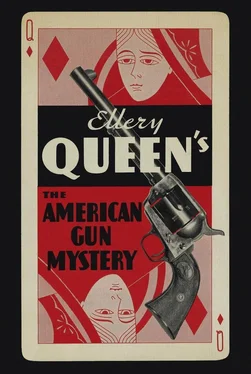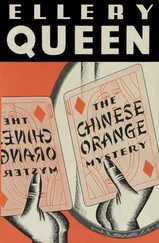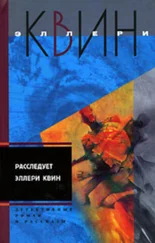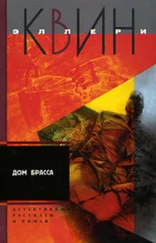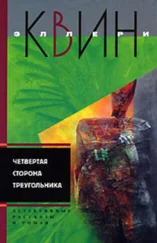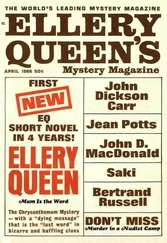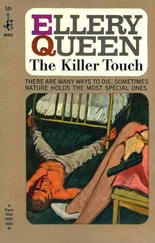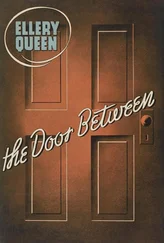Ellery Queen
The American Gun Mystery
(Death At the Rodeo)
To C. RAYMOND EVERITT
for one reason
and
ALBERT FOSTER, Jr.
for another
For the half-dozenth time in a quartet of years I find myself confronted with the formidable task of introducing a new work from the pen of my friend, Ellery Queen. It seems only yesterday that I sat down to write a preface to The Roman Hat Mystery, that historic case which I bullied Ellery into fictionizing — the first Queen adventure to be put between covers; and yet that was over four years ago!
Now, so contagious is recognition of authentic genius, whether it is in the creation of a new ocracy or a new crime-story metier, Ellery Queen has become, a symbol of the unusual in detective fiction in America. In England he had been hailed by no less distinguished a critic than the London Times as “the logical successor to Sherlock Holmes”; and on the Continent, where (as Vivoudiére says in his florid but earnest tribute) “ M. Queen a pris d’assaut les remparts des cyniques de lettres,” he has been translated into a polyglot of tongues (yea, even unto the Scandinavian), so that his bookshelves bristle with unfamiliar-sounding titles and his correspondence alone provides his son and her with a steady supply of foreign stamps which would delight the soul of even a less enthusiastic minor philatelist. In the light of such recognition, therefore — I am tempted to say “fame,” but that would probably cost me my friend — there is little I can offer which would not be sheer repetition. On the other hand, it should prove of interest to Ellery Queen’s readers to get his personal view on the case which forms the basis of the present volume. I quote verbatim a letter dated some months ago:
My long-suffering J.J.:
Now that the pestiferous Egyptian is safely tucked into his sarcophagus and the lid clamped down, perhaps I shall have time to work on a problem whose actual inception and solution you no doubt recall from history and some conversations of importance between us. For some time I’ve been yearning to do the Horne case. What an affair it was that centered about that salty old character, Buck Horne, and that agitated these rapacious brains some years ago!
It isn’t so much because I am endeared to my own cleverness in that fantastic brush with criminality that I propose to write my next opus around it. Oh, yes, the reasoning was interesting enough, and the investigation was not without its moments, I grant all that. But it’s not these things. Rather it’s the odd nature of the background.
I am, as you know, essentially a creature of cities; even in matters of practicality I must have my feet on the asphalt rather than the turfy ground. Well, sir, the dramatic debacle at our w.k. bowl which precipitated me into that improbable adventure also succeeded in wrenching me from the familiar gasoline atmosphere of our fair city and thrusting me into a strongly scented atmosphere indeed! — of stables, horses, alkali, cattle, branding-irons, ranchos...
In a word, J.J., your correspondent found himself conducting an inquiry into a murder which might have been committed a hundred years ago in — in, well, old Texas, suh, or Wyoming itself, from which so many of the principals came. At any moment I expected a yelling Piute — or is it Siwash? — to materialize out of the arena’s horsy air and come galloping at me with uplifted, thirsty tomahawk...
At any rate, J.J., this florid explanation is to announce that my forthcoming chef-d’oeuvre will deal with cowpunchers, six-shooters, lariats, hosses, alfalfa, chaps — and, lest you think I have gone West of the Great Divide on you, let me hasten to add that this epic of the plains takes place — as it did — in the heart of New York City, with that fair metropolis’s not unpleasing ha-cha as a sort of Greek chorus to the rattle of musketry.
Faithfully, etc., etc.
I have myself read the manuscript of The American Gun Mystery with my unfailing avidity; and in my opinion the Ellery Queen ’scutcheon remains gloriously untarnished, if indeed a new gloss has not been imparted to that brave relique. This latest episode from the intellectual exploits of my friend is every bit as stimulating to the connoisseur as The Greek Coffin Mystery, The Dutch Shoe Mystery, or any of the others in the Queen cycle; and possesses besides a tangy flavor pleasantly and peculiarly its own.
J.J. McC
NEW YORK
February, 1933
“... now bend thy mind to feel
The first sharp motions of the forming wheel.”
“To me,” said Ellery Queen, “a wheel is not a wheel unless it turns.”
“That sounds suspiciously like pragmatism,” I said.
“Call it what you like.” He took off his pince-nez and began to scrub its shining lenses vigorously, as he always does when he is thoughtful. “I don’t mean to say that I cannot recognize it as a material object per se; it’s simply that it has no meaning for me until it begins to function as a wheel. That’s why I always try to visualize a crime in motion. I’m not like Father Brown, who is intuitional; the good padre — bless his heart! — has only to squint dully at a single spoke... You see what I’m driving at, J.J.?”
“No,” I said truthfully.
“Let me make it clearer by example. You take the case of this preposterous and charming creature, Buck Horne. Well, certain things happened before the crime itself. I found out about them later. But my point is that, even had I — by some miraculous chance — been an invisible spectator to those little preambulatory events, they should have had no significance for me. The driving force, the crime, was lacking. The wheel was at rest.”
“Still obscure,” I said, “although I begin to grasp your meaning dimly.”
He knit his straight brows, then relaxed with a chuckle, stretching his long lean limbs nearer the fire. He lighted a cigaret and puckered smoke at the ceiling. “Permit me to indulge that rotten vice of mine and play the metaphor out... There was the case, the Horne case, our wheel. Imbedded in each spoke there was a cup; and in each cup there was a blob of color.
“Now here was the blob of black — Buck Horne himself. There the blob of gold — Kit Horne. Ah, Kit Horne.” He sighed. “The blob of flinty gray — old Wild Bill, Wild Bill Grant. The blob of healthy brown — his son Curly. The blob of poisonous lavender — Mara Gay, that... what did the tabs call her? The Orchid of Hollywood. My God!.. And Julian Hunter, her husband, the dragon-green of our spectroscope. And Tony Mars — white? And the prizefighter Tommy Black — good strong red. And One-Arm Woody — snake-yellow for him. All those others.” He grinned at the ceiling. “What a galaxy of colors! Now observe those little blobs of color, each an element, each a quantity, each a miniscule to be weighed and measured; each distinct in itself. At rest, inanimate, each by itself — what did they mean to me? Precisely nothing.”
“And then, I suppose,” I suggested, “the wheel began to spin?”
“Something of the sort. A tiny explosion, a puff of the cosmic effluvium — something applied the motive-power, the primal urge of motion; and the wheel turned. Fast, very fast. But observe what happened.” He smoked lazily and, I thought, not without satisfaction. “A miracle! For where are those little blobs of color, each a quantity, an element, a miniscule to be weighed and measured — each distinct in itself, as distinct as the component suns of a fixed universe? They’ve merged; they’ve lost their prismatic quality and become a coruscating whole; no longer distinct, you will observe, but a flowing symmetrical pattern which tells the whole story of the Horne case.”
Читать дальше
